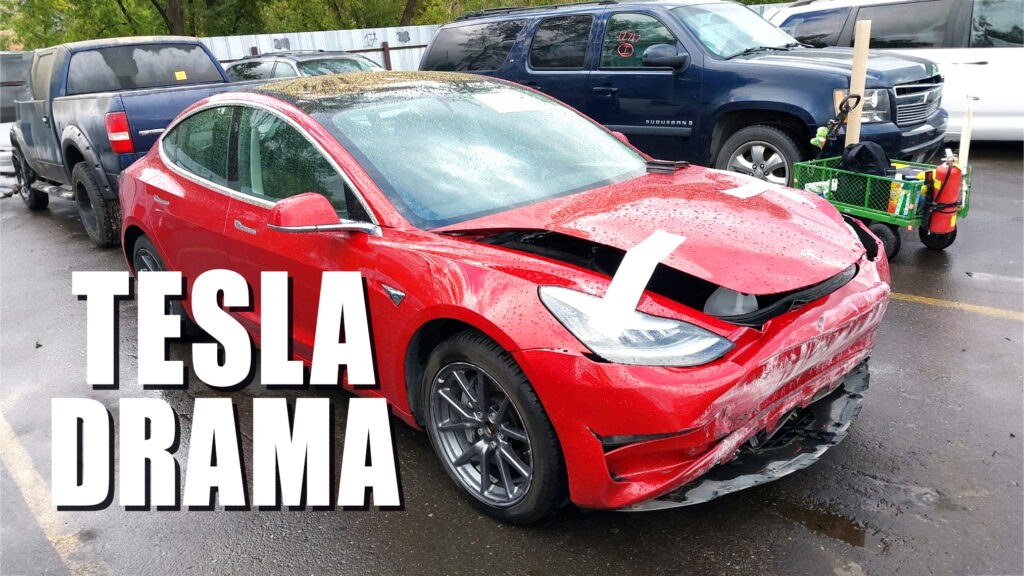While Tesla labeled the report a 'cherry-picking approach to journalism,' it opted not to respond to the 'detailed questions' presented for the Reuters article beforehand

Tesla has been a subject of discussion across the political spectrum. However, one particular article from Reuters, titled “Tesla blamed drivers for failures of parts it long knew were defective”, didn’t sit right with the automaker. Now, it’s responded to that report on X, formerly Twitter, and has gone so far as to label it a “manufactured story” with a “misleading headline” and false accusations. Here’s an overview of the unfolding drama.
The story from Reuters, which Carscoops covered in detail, prominently featured first-person accounts alleging that Tesla intentionally attributed suspension damage to customers, despite being aware of the common defects in the parts in question. Reuters supports these claims by stating that it reviewed “thousands of Tesla documents” that were “dated between 2016 and 2022” including “repair reports from Tesla service centers globally”, although it did not share these documents online.
Nevertheless, the story gained such significant attention that two U.S. Senators, Richard Blumenthal and Edward J. Markey, who have a history of criticizing Tesla, called on the automaker to issue a vehicle recall. Now, it appears that Tesla has taken notice of these calls and has responded with a statement exceeding 500 words on X addressing the situation.
advertisement scroll to continue
Read: Scathing Report Says Tesla Knew About Flawed Suspension Yet Blamed Customers
It calls out the publication for not focusing on the fact that the lead first-person account of a broken suspension part not covered under warranty happened because that person allegedly hit something with their Tesla. “The customer was informed that Tesla was able to review the telemetry and understood there was a crash that resulted in this repair not being covered by warranty,” it wrote.
It goes on to say that statements from the article are based on erroneous data and that overall it “paints a false and misleading picture of Tesla.” What it didn’t address is interesting though. Tesla said nothing of an ongoing investigation in Norway over potentially faulty suspension parts. Of course, it could be that the government there clears the automaker of wrongdoing, but it could go either way.
What’s certain is that no company is perfect, but good faith attempts at providing accurate and provable information are getting harder to find. Tesla had the opportunity to embrace transparency by fully disclosing data related to these incidents, yet it has refrained from doing so thus far.
In fact, the EV maker had the perfect opportunity to present its side of the story and set the record straight when Reuters reached out to both Tesla and Elon Musk ‘with detailed questions’ before the story hit the headlines. Instead, their response came afterward on X, with cries of ‘manufactured story.’ This situation serves as an enduring reminder of Tesla’s bad decision to disband its PR department in April of 2020. Meanwhile, Reuters could have (and still can, unless there are undisclosed reasons) published the trove of service communications it claims to possess as evidence supporting its report.
Note: Opening photo is from IAAI auctions and it is unrelated to the incidents reported here


